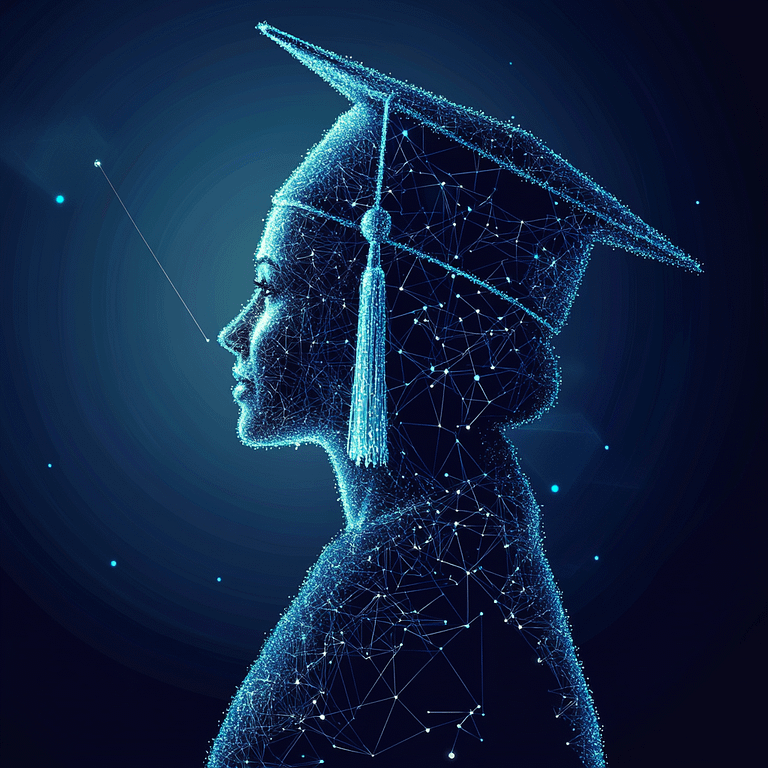
How AI Is Shaping the Future of Education and Learning
In an era of rapid technological advancements, artificial intelligence (AI) is emerging as a transformative force in education and learning. From personalised learning experiences to automated administrative processes, AI is reshaping traditional methods and opening doors to innovative opportunities. This article explores the key ways AI is revolutionising education and its potential to shape the future of learning.
Personalised Learning: Tailored for Every Student
One of the most significant contributions of AI in education is its ability to personalise learning. Traditional classrooms often follow a one-size-fits-all model, which may not cater to individual student needs. AI-driven systems, however, can analyse a learner’s strengths, weaknesses, and preferences to create customised learning pathways.
For instance, platforms like Duolingo use AI to adapt lesson difficulty based on a learner’s progress, ensuring they stay challenged but not overwhelmed. Similarly, tools like DreamBox for maths education provide tailored exercises and real-time feedback, empowering students to learn at their own pace.
This level of personalisation enhances engagement and helps address gaps in understanding, ultimately improving outcomes for students of all abilities.
Intelligent Tutoring Systems: Learning Beyond the Classroom
AI-powered tutoring systems, such as Carnegie Learning and Khan Academy’s AI-driven tools, are offering supplementary education that goes beyond the traditional classroom setting. These systems act as virtual tutors, available 24/7 to assist with complex concepts and answer queries.
Unlike human tutors, AI systems can instantly identify when a student struggles with a particular topic and provide targeted assistance. For example, in subjects like mathematics and science, where understanding foundational concepts is crucial, these tools can be invaluable in helping students build confidence and mastery.
Automating Administrative Tasks: Freeing Teachers to Teach
Teachers often juggle numerous responsibilities, from lesson planning to grading assignments. AI can alleviate some of this burden by automating routine administrative tasks, allowing educators to focus more on teaching and interacting with students.
Grading is a prime example. AI tools like Gradescope can assess multiple-choice and short-answer questions quickly and accurately. For essay-based assessments, AI-powered systems can provide initial feedback on grammar, coherence, and relevance, though final grading may still require human oversight.
Additionally, AI-driven scheduling and communication tools can streamline parent-teacher interactions, helping educators maintain better communication with families while managing their workload more effectively.
Bridging Language Barriers with AI
Language barriers have long been a challenge in global education, especially in multicultural and international settings. AI tools, such as Google Translate and language-learning apps, are breaking down these barriers, enabling seamless communication and learning.
For example, AI-powered transcription and translation tools allow non-native speakers to access lectures and resources in their preferred language. This inclusivity ensures that language is no longer a limiting factor in education, fostering a more global and interconnected learning environment.
Enhancing Accessibility for Special Educational Needs
AI is also playing a pivotal role in making education more accessible for students with special educational needs (SEN). For instance, AI-powered speech-to-text tools, like Otter.ai, assist students with hearing impairments by transcribing spoken content into text in real time.
Similarly, AI-driven apps such as Microsoft’s Seeing AI cater to visually impaired students by describing objects, people, and scenes aloud. These technologies enable SEN students to participate more actively in educational activities, promoting inclusivity and equal opportunities.
Immersive Learning Experiences with AI and AR/VR
The integration of AI with augmented reality (AR) and virtual reality (VR) is revolutionising how students interact with content. AI-driven AR/VR platforms provide immersive experiences that make learning engaging and memorable.
Imagine a history class where students explore ancient civilisations through a virtual time machine, or a science lesson where they dissect a virtual frog without harming any animals. Such experiences are not only interactive but also cater to different learning styles, ensuring a deeper understanding of the subject matter.
Data-Driven Insights: Informing Decision-Making
AI excels at processing vast amounts of data, and this capability is proving invaluable in education. By analysing student performance data, AI can identify trends and patterns that help educators make informed decisions.
For instance, AI systems can flag students at risk of falling behind based on their engagement levels and performance. Educators can then intervene early, providing additional support or resources to help those students succeed. Moreover, AI-driven analytics offer insights into the effectiveness of teaching methods, enabling continuous improvement in instructional practices.
Challenges and Ethical Considerations
While AI holds immense potential for education, it also brings challenges and ethical considerations that must be addressed. One major concern is data privacy. AI systems rely on collecting and analysing student data, which raises questions about how this data is stored, used, and protected.
Bias in AI algorithms is another issue. If not carefully designed, AI systems can perpetuate existing inequalities, disadvantaging certain groups of students. Ensuring transparency, fairness, and inclusivity in AI applications is crucial for their successful implementation in education.
Finally, the over-reliance on AI could lead to reduced human interaction, which is a vital component of the learning process. Balancing AI integration with human involvement is essential to preserve the social and emotional aspects of education.
The Road Ahead: A Collaborative Future
The future of AI in education is bright but requires collaboration between educators, technologists, and policymakers to realise its full potential. By investing in teacher training, developing ethical AI frameworks, and ensuring equitable access to technology, we can create an education system that leverages AI for the benefit of all learners.
Ultimately, AI is not a replacement for teachers but a powerful tool to enhance their capabilities and transform education into a more personalised, inclusive, and effective experience. As we embrace this technological revolution, the possibilities for the future of learning are truly limitless.
AI is reshaping education by personalising learning, automating tasks, and making knowledge accessible to a broader audience. As we navigate this transformative era, it is our responsibility to ensure that AI serves as a force for good, empowering students and educators alike to achieve their full potential.